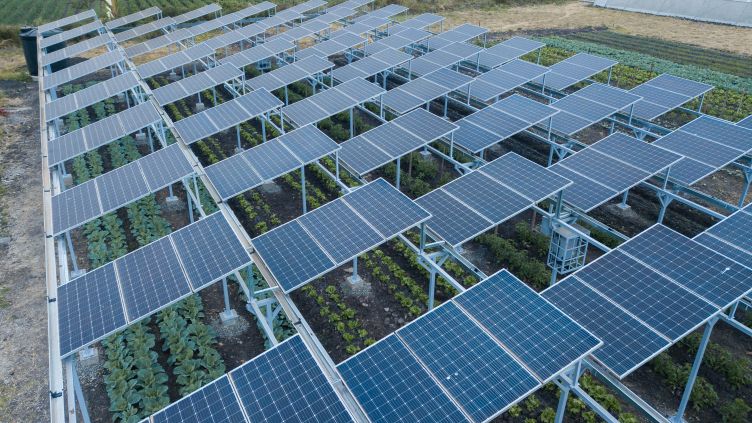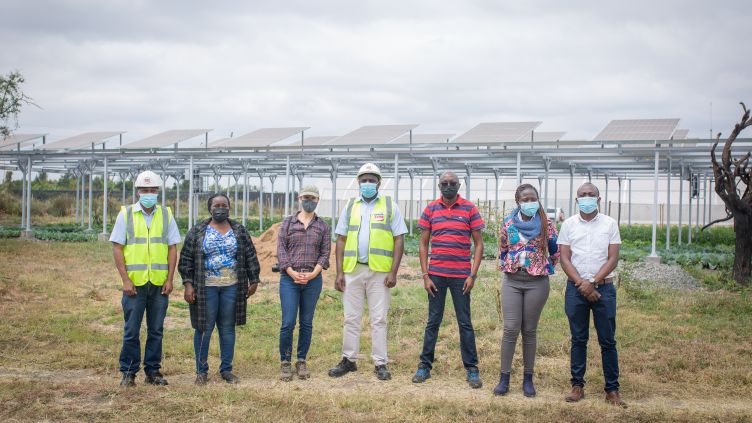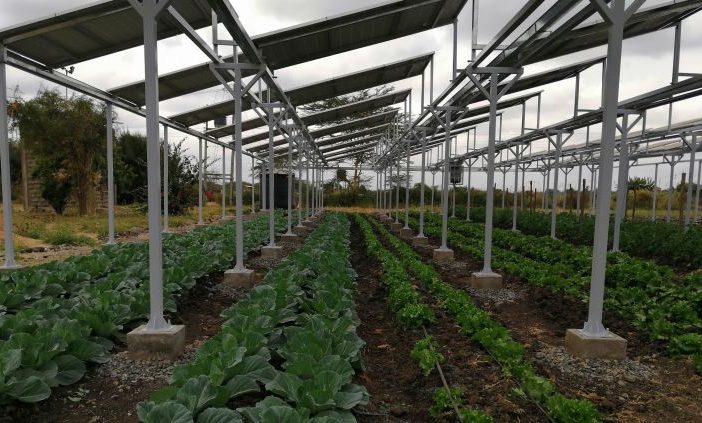- Agrivoltaic energy systems can combine the delivery of solar electricity, crop production, and rainwater harvesting on the same land area.
- Instead of being mounted close to the ground like traditional solar power arrays, agrivoltaic systems are constructed several meters high, with gaps between the arrays, enabling crops to be grown underneath.
This more favourable environment for plants means the range of crops can be extended to higher-value ones, which can improve farmer incomes in disadvantaged rural communities. Crops may also be grown in locations previously unsuitable, further increasing food supplies and revenue sources.
Working with African solar developers and a Kenyan agribusiness company, as well as non-governmental organisations, regional political organisations, local communities and workers, University of Sheffield’s Harvesting the Sun Twice researchers have identified project implementation sites in Kenya and Uganda.
The project seeks to reveal if agrivoltaic technology can lead to improved access to energy and increased incomes through production of higher-value crops as well as identify the barriers within local communities to the uptake of the technology.

Image credit: Chloride Exide Ltd
According to Dr Richard Randle-Boggis, a researcher at the University of Sheffield’s Harvesting the Sun Twice project, the trial initiative will determine the potential of agrivoltaic systems in east Africa.
“We needed to build a test system to see if this technology will be suitable for the region,” Randle-Boggis said, reiterating that, unlike conventional solar mini-grid systems, agrivoltaics have the additional benefits of improving food and water security, while strengthening people’s resilience against the climate crisis, as well as providing low-carbon electricity.
The solar panels do not just reduce water loss from plants and the soil – their shade mitigates some of the stress experienced by plants due to high day temperatures and UV damage, Randle-Boggis said.

Image credit: Chloride Exide Ltd
The researchers will uncover which economic, social, cultural and political factors help or hinder the expansion of agrivoltaic systems in this region. They will also assess how agrivoltaic technology can best be co-designed with the users and seek input from national and regional policymakers to inform the potential rollout of systems across East Africa and beyond.
This initiative is funded as part of UKRI’s Global Challenges Research Fund (GCRF) Collective Programme and is a collaboration with the University of York, World Agroforestry (ICRAF), Stockholm Environment Institute, Teeside University, Centre for Research in Energy and Energy Conservation, and African Centre for Technology Studies.
Author: Bryan Groenendaal

















